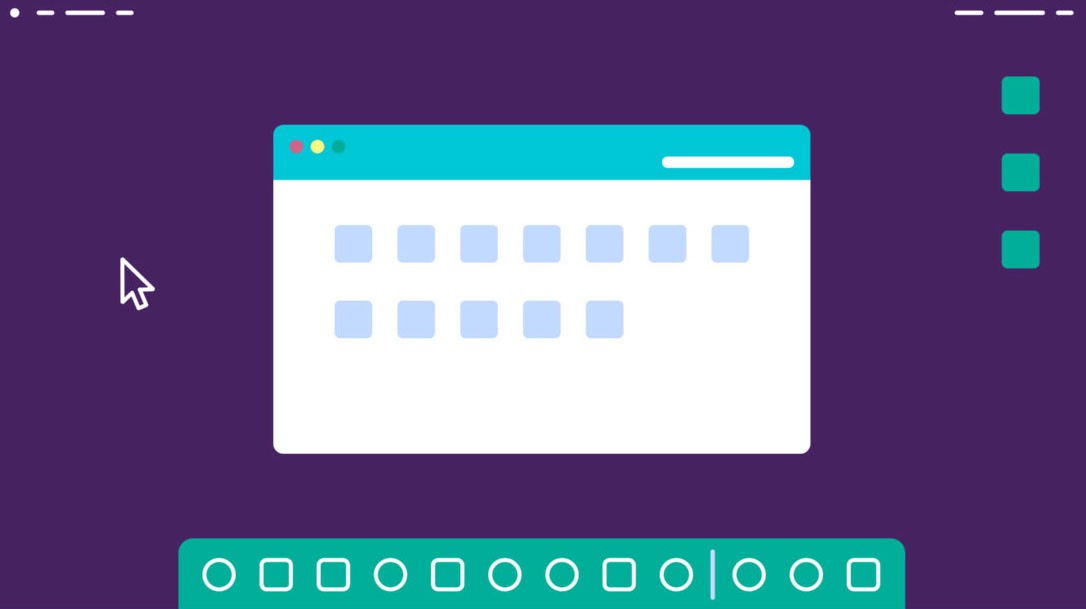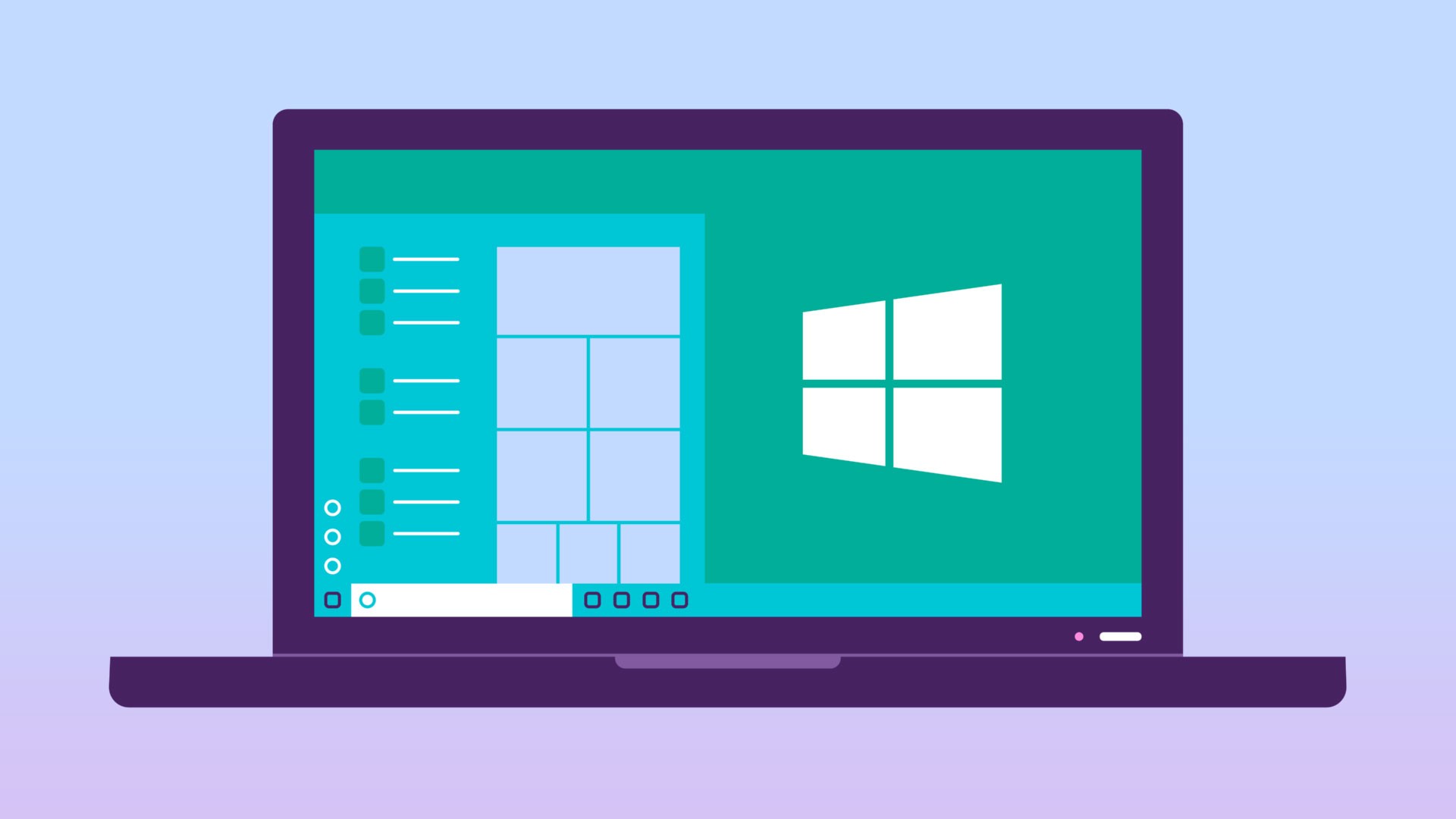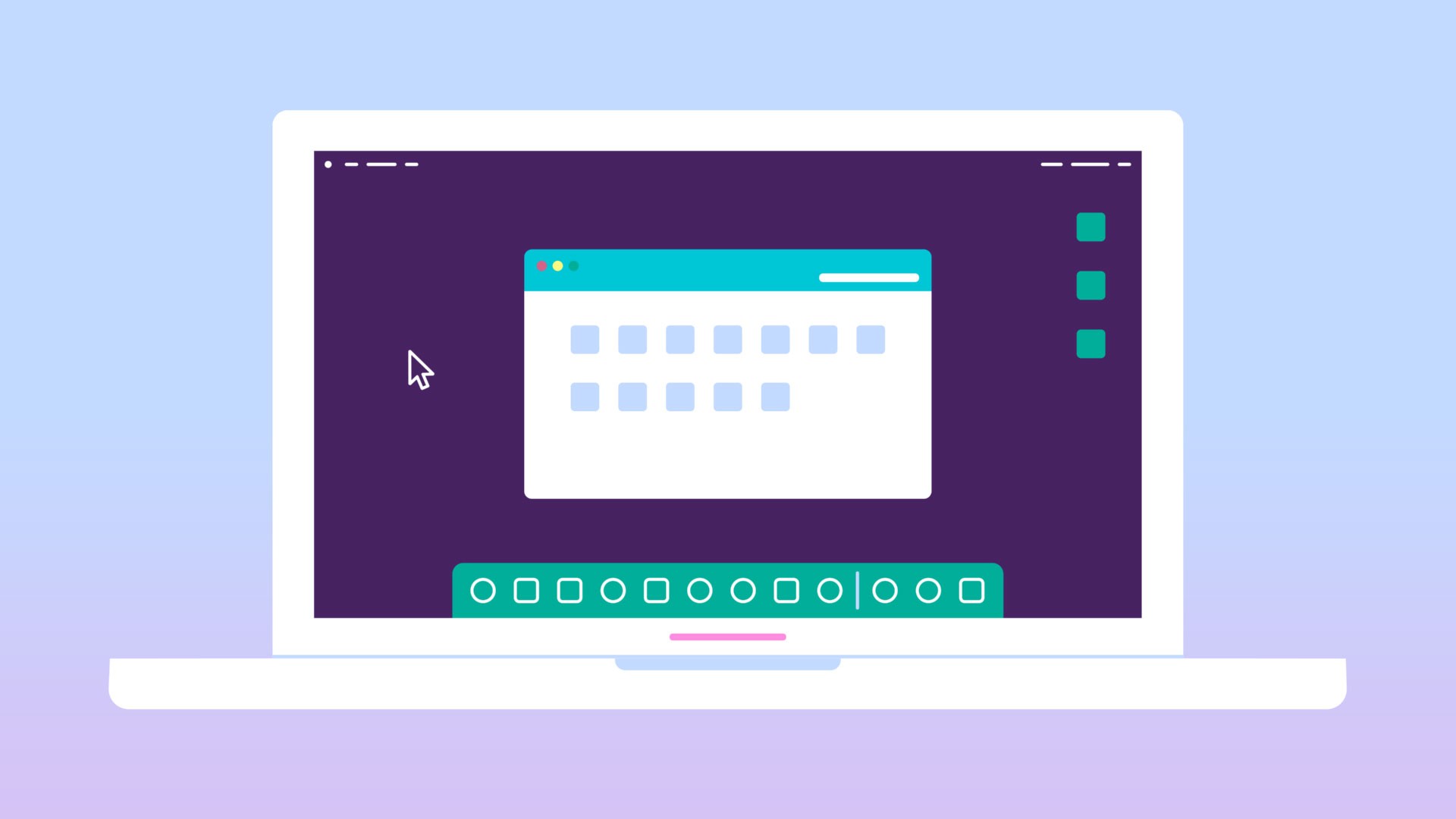What Is An Operating System? It’s the core software that powers your computer, managing everything from memory to hardware. At WHAT.EDU.VN, we simplify complex topics, offering clear answers. Dive in to explore operating system basics, types, functions and more. Get your questions answered for free on WHAT.EDU.VN! This article covers core system software, resource management, and user interface.
1. Understanding the Basics: What is an Operating System?
An operating system (OS) is the foundational software that manages computer hardware and software resources and provides common services for computer programs. It acts as an intermediary between the user and the computer hardware, making it possible for applications to run. Think of it as the conductor of an orchestra, ensuring all parts work harmoniously. Without an operating system, a computer is just a collection of electronic components. Understanding operating systems is crucial for anyone using a computer, from students to professionals.
2. Core Functions of an Operating System: What Does It Do?
The operating system performs several essential functions that enable the computer to operate efficiently and effectively. These functions include:
- Resource Management: Managing the allocation of CPU time, memory, and I/O devices.
- Process Management: Creating, scheduling, and terminating processes.
- Memory Management: Allocating and deallocating memory space to programs.
- File Management: Organizing and managing files and directories on storage devices.
- Device Management: Controlling and coordinating the operation of peripheral devices.
- Security: Providing security features such as user authentication and access control to protect the system from unauthorized access and malicious software.
- User Interface: Providing an interface for users to interact with the computer.
3. Types of Operating Systems: What Are the Different Kinds?
Operating systems come in various forms, each designed for specific purposes. Here are some common types:
- Batch Operating System: Processes jobs in batches without requiring user interaction. It is useful for large, repetitive tasks.
- Time-Sharing Operating System: Allows multiple users to share the computer’s resources simultaneously. Each user gets a slice of time to execute their tasks.
- Real-Time Operating System (RTOS): Guarantees timely processing of data and is used in applications where response time is critical, such as industrial control systems and medical devices.
- Distributed Operating System: Manages a group of networked computers, making them work as a single system. It enhances performance and reliability.
- Network Operating System: Runs on a server and manages networking functions, allowing multiple computers to communicate and share resources over a network.
- Mobile Operating System: Designed for mobile devices like smartphones and tablets, providing features such as touch input, app management, and wireless connectivity.
- Embedded Operating System: Designed for embedded systems like washing machines, smart TVs, and automotive systems.
4. Popular Operating Systems for Personal Computers: Windows, macOS, and Linux
The personal computer market is dominated by three major operating systems: Microsoft Windows, macOS, and Linux. Each has its own strengths and weaknesses:
- Microsoft Windows: The most widely used OS for personal computers, known for its broad software compatibility and user-friendly interface.
- macOS: Developed by Apple, known for its sleek design, security features, and integration with Apple hardware.
- Linux: An open-source OS known for its flexibility, stability, and customizability. It is popular among developers and system administrators.
5. Microsoft Windows: Features and Versions
Microsoft Windows has been a dominant force in the operating system market for decades. Its popularity stems from its user-friendliness and extensive software support. Key features include:
- Graphical User Interface (GUI): An intuitive interface that makes it easy for users to interact with the computer.
- Compatibility: Supports a wide range of hardware and software.
- Gaming: Offers excellent support for gaming, with a large library of games available.
- Productivity Tools: Integrates seamlessly with Microsoft Office and other productivity applications.
Notable versions of Windows include Windows 10, Windows 8, Windows 7, and Windows Vista. Windows 10 is the most recent and widely used version, offering improved performance, security, and features.
6. macOS: Features and Advantages
macOS, developed by Apple, is known for its elegant design, strong security features, and seamless integration with Apple hardware. Key advantages include:
- User Experience: Offers a clean and intuitive user interface.
- Security: Provides robust security features to protect against malware and viruses.
- Ecosystem: Integrates seamlessly with other Apple devices and services.
- Stability: Known for its stability and reliability.
7. Linux: Open Source and Customizable
Linux is an open-source operating system, meaning its source code is freely available and can be modified and distributed by anyone. Key advantages include:
- Flexibility: Highly customizable, allowing users to tailor the OS to their specific needs.
- Stability: Known for its stability and reliability, making it suitable for servers and critical systems.
- Security: Offers strong security features, making it resistant to malware and viruses.
- Cost: It is free to use, which reduces the overall cost of ownership.
Linux distributions, such as Ubuntu, Fedora, and Linux Mint, offer different desktop environments and software packages, catering to various user preferences.
8. Mobile Operating Systems: iOS and Android
Mobile operating systems are designed for smartphones, tablets, and other mobile devices. The two dominant players in the mobile OS market are Apple iOS and Google Android.
- iOS: Developed by Apple, known for its user-friendly interface, strong security features, and seamless integration with Apple hardware.
- Android: Developed by Google, known for its open-source nature, customization options, and wide range of supported devices.
9. Apple iOS: Features and Ecosystem
Apple iOS is the operating system that powers iPhones, iPads, and iPod Touch devices. Key features include:
- User Interface: Offers a clean, intuitive, and user-friendly interface.
- App Store: Provides access to a vast library of high-quality apps.
- Security: Known for its strong security features, protecting users from malware and viruses.
- Integration: Integrates seamlessly with other Apple devices and services, such as iCloud and iMessage.
10. Google Android: Open Source and Versatile
Google Android is the most widely used mobile operating system in the world. Key features include:
- Open Source: Highly customizable, allowing manufacturers and developers to tailor the OS to their specific needs.
- Google Services: Integrates seamlessly with Google services, such as Gmail, Google Maps, and Google Drive.
- Hardware Support: Supports a wide range of hardware devices, from smartphones to tablets to wearables.
- App Ecosystem: Provides access to a vast library of apps through the Google Play Store.
11. Real-Time Operating Systems (RTOS): Critical Applications
Real-Time Operating Systems (RTOS) are designed for applications where response time is critical. They guarantee timely processing of data and are used in various industries:
- Industrial Automation: Controlling machinery and processes in manufacturing plants.
- Aerospace: Managing flight control systems and navigation.
- Automotive: Controlling engine management systems and anti-lock braking systems.
- Medical Devices: Monitoring patients and controlling medical equipment.
12. Embedded Operating Systems: Powering Smart Devices
Embedded Operating Systems are designed for embedded systems like washing machines, smart TVs, and automotive systems. Key characteristics include:
- Resource Efficiency: Optimized to run on devices with limited processing power and memory.
- Reliability: Designed for long-term, uninterrupted operation.
- Real-Time Capabilities: May include real-time capabilities for time-critical applications.
- Customization: Can be customized to meet the specific needs of the embedded system.
13. Understanding Kernels: The Heart of the OS
The kernel is the core component of an operating system. It’s responsible for managing the system’s resources and providing essential services to other parts of the OS and applications. The kernel’s primary tasks include:
- Process Management: Scheduling and managing processes, allocating CPU time, and handling inter-process communication.
- Memory Management: Allocating and deallocating memory, managing virtual memory, and protecting memory regions.
- Device Management: Managing device drivers and handling I/O operations.
- System Calls: Providing an interface for applications to request services from the kernel.
14. Boot Process: How Your OS Starts Up
The boot process is the sequence of steps that a computer takes to start up and load the operating system. It typically involves the following stages:
- BIOS/UEFI: The Basic Input/Output System (BIOS) or Unified Extensible Firmware Interface (UEFI) initializes the hardware and performs a power-on self-test (POST).
- Bootloader: The bootloader loads the kernel into memory and starts the OS.
- Kernel Initialization: The kernel initializes the system, loads device drivers, and starts essential system services.
- User Interface: The OS loads the user interface, allowing the user to log in and start using the computer.
15. Virtual Machines and Operating Systems: Running Multiple OS
Virtual machines (VMs) allow you to run multiple operating systems on a single physical machine. Each VM has its own virtual hardware resources, such as CPU, memory, and storage. This enables you to:
- Test Software: Test software on different operating systems without needing multiple physical machines.
- Run Legacy Applications: Run older applications that are not compatible with your current OS.
- Consolidate Servers: Reduce the number of physical servers by running multiple VMs on a single machine.
- Isolate Environments: Isolate different environments for security or development purposes.
16. Command Line Interface (CLI) vs. Graphical User Interface (GUI)
Operating systems provide two primary ways for users to interact with the computer: the Command Line Interface (CLI) and the Graphical User Interface (GUI).
- CLI: A text-based interface where users type commands to perform tasks. It is often preferred by developers and system administrators for its power and flexibility.
- GUI: A visual interface with icons, windows, and menus. It is more user-friendly and intuitive for everyday tasks.
17. Open Source vs. Proprietary Operating Systems
Operating systems can be classified as either open source or proprietary, based on their licensing and availability of source code.
- Open Source: The source code is freely available and can be modified and distributed by anyone. Examples include Linux and Android.
- Proprietary: The source code is owned by a company and is not freely available. Examples include Windows and macOS.
18. Security Features in Operating Systems: Protecting Your Data
Security is a critical aspect of operating systems. Modern OSs include various security features to protect against malware, viruses, and unauthorized access:
- User Authentication: Requiring users to log in with a username and password.
- Access Control: Restricting access to files and resources based on user roles and permissions.
- Firewall: Blocking unauthorized network traffic.
- Antivirus Software: Detecting and removing malware and viruses.
- Security Updates: Regularly patching vulnerabilities to prevent exploits.
19. Operating System Updates: Why They Are Important
Operating system updates are crucial for maintaining the security and stability of your computer. These updates often include:
- Security Patches: Fixing vulnerabilities to prevent exploits.
- Bug Fixes: Addressing software bugs that can cause crashes or other issues.
- Performance Improvements: Optimizing the OS for better performance.
- New Features: Adding new features and capabilities to the OS.
20. Future Trends in Operating Systems: What’s Next?
The field of operating systems is constantly evolving. Some future trends include:
- Cloud-Based OS: Operating systems that run primarily in the cloud, providing access to applications and data from any device.
- Microkernel Architecture: Designing OSs with smaller, more modular kernels for improved security and reliability.
- Artificial Intelligence (AI) Integration: Incorporating AI into OSs to improve performance, security, and user experience.
- Quantum Computing OS: Developing operating systems for quantum computers, which will require new approaches to programming and resource management.
21. How to Choose the Right Operating System for Your Needs
Choosing the right operating system depends on your specific needs and priorities. Consider the following factors:
- Compatibility: Ensure the OS supports the hardware and software you need to use.
- User-Friendliness: Choose an OS with an interface that you find easy to use.
- Security: Consider the security features of the OS and its track record for security updates.
- Cost: Factor in the cost of the OS and any associated software or hardware.
- Community Support: Look for an OS with a strong community of users and developers who can provide support and assistance.
22. Troubleshooting Common Operating System Issues
Even with the best operating systems, you may encounter issues from time to time. Here are some common troubleshooting tips:
- Restart Your Computer: Often, a simple restart can resolve many issues.
- Update Your OS: Ensure you have the latest updates installed.
- Check for Driver Updates: Outdated or corrupted drivers can cause problems.
- Run Antivirus Scan: Check for malware or viruses.
- Check Hardware: Ensure all hardware components are functioning correctly.
- System Restore: Use System Restore to revert your system to a previous state.
23. Optimizing Your Operating System for Performance
To get the best performance from your operating system, consider the following tips:
- Uninstall Unused Programs: Remove programs you no longer use.
- Disable Startup Programs: Prevent unnecessary programs from running at startup.
- Defragment Your Hard Drive: Improve file access times by defragmenting your hard drive (if you’re using a traditional HDD).
- Clean Up Your Disk: Remove temporary files and other unnecessary data.
- Add More RAM: Increasing RAM can significantly improve performance.
24. Understanding File Systems: How Data is Organized
A file system is a method of organizing and storing files on a storage device. Different operating systems use different file systems:
- NTFS (Windows): The standard file system for Windows, offering features such as security permissions, encryption, and journaling.
- APFS (macOS): Apple’s modern file system, designed for speed, security, and reliability.
- ext4 (Linux): The most common file system for Linux, known for its performance and scalability.
- FAT32: A legacy file system that is compatible with many operating systems, but has limitations such as a maximum file size of 4GB.
25. Device Drivers: Connecting Hardware and Software
Device drivers are software programs that enable the operating system to communicate with hardware devices. They act as translators between the OS and the device, allowing them to work together seamlessly. Keeping your device drivers up to date is essential for ensuring compatibility and optimal performance.
26. System Resources: CPU, Memory, and Storage
Operating systems manage three primary system resources: CPU, memory, and storage.
- CPU (Central Processing Unit): The brain of the computer, responsible for executing instructions.
- Memory (RAM): Temporary storage that holds data and instructions that the CPU is actively using.
- Storage (Hard Drive/SSD): Long-term storage for files, applications, and the operating system itself.
27. Process Management: Multitasking and Scheduling
Process management is the function of the operating system that involves creating, scheduling, and terminating processes. A process is an instance of a program that is being executed. The OS uses various scheduling algorithms to determine which process gets access to the CPU at any given time, enabling multitasking and allowing you to run multiple applications simultaneously.
28. Memory Management: Allocating and Protecting Memory
Memory management is the function of the operating system that involves allocating and deallocating memory space to programs. The OS also protects memory regions to prevent one program from interfering with another. Virtual memory is a technique that allows the OS to use disk space as an extension of RAM, enabling you to run programs that require more memory than is physically available.
29. Virtualization Technologies: Enhancing OS Capabilities
Virtualization technologies, such as VMware and VirtualBox, allow you to run multiple operating systems on a single physical machine. This can be useful for testing software, running legacy applications, or consolidating servers. Containerization technologies, such as Docker, provide a lightweight alternative to virtualization, allowing you to package and run applications in isolated environments.
30. Contributing to Open Source Operating Systems
If you’re interested in contributing to the development of open-source operating systems like Linux, there are many ways to get involved:
- Coding: Contributing code to fix bugs, add new features, or improve performance.
- Testing: Testing new releases to identify and report bugs.
- Documentation: Writing documentation to help users understand and use the OS.
- Translation: Translating the OS and documentation into other languages.
- Community Support: Providing support to other users through forums, mailing lists, and chat channels.
31. Comparing Different Linux Distributions
There are many different Linux distributions, each with its own strengths and weaknesses. Some popular distributions include:
- Ubuntu: A user-friendly distribution known for its ease of use and broad software compatibility.
- Fedora: A cutting-edge distribution known for its focus on innovation and open-source technologies.
- Debian: A stable and reliable distribution known for its strict adherence to open-source principles.
- Linux Mint: A beginner-friendly distribution based on Ubuntu, with a focus on providing a complete and out-of-the-box experience.
- Arch Linux: A highly customizable distribution known for its rolling-release model and its focus on simplicity and minimalism.
32. The Role of the Operating System in Gaming
The operating system plays a crucial role in gaming. It is responsible for managing the hardware resources required to run games, such as the CPU, GPU, and memory. The OS also provides APIs (Application Programming Interfaces) that allow games to interact with the hardware and software components of the system. Windows is the most popular operating system for gaming due to its broad hardware and software compatibility.
33. Operating Systems and Cloud Computing
Operating systems are essential in cloud computing. Cloud service providers use various operating systems to power their infrastructure and provide services to their customers. Virtualization and containerization technologies allow them to run multiple operating systems and applications on a single physical machine, optimizing resource utilization and reducing costs.
34. The Future of Mobile Operating Systems
The future of mobile operating systems is likely to be shaped by several trends, including:
- Foldable Devices: Operating systems optimized for foldable smartphones and tablets.
- Augmented Reality (AR) and Virtual Reality (VR): Operating systems with built-in support for AR and VR technologies.
- Artificial Intelligence (AI): Operating systems that use AI to improve user experience, security, and performance.
- 5G Connectivity: Operating systems optimized for 5G networks, enabling faster data speeds and lower latency.
35. Exploring Open Source Alternatives to Windows and macOS
If you’re looking for open-source alternatives to Windows and macOS, consider the following:
- Linux: A highly customizable and versatile operating system that is available in many different distributions.
- FreeBSD: A Unix-like operating system known for its stability, security, and advanced networking features.
- ReactOS: An open-source operating system that aims to be binary-compatible with Windows, allowing you to run Windows applications and drivers.
36. Understanding System Calls: Interacting with the Kernel
System calls are the interface between user-level applications and the operating system kernel. When an application needs to perform a task that requires access to system resources, such as reading a file or creating a process, it makes a system call. The kernel then performs the requested task on behalf of the application.
37. The Importance of Memory Protection in Operating Systems
Memory protection is a critical security feature in operating systems. It prevents one process from accessing the memory of another process, protecting against crashes and security vulnerabilities. Memory protection is typically implemented using hardware features such as memory management units (MMUs).
38. What Is an Operating System? Get Your Questions Answered at WHAT.EDU.VN
Still have questions about what is an operating system? Don’t struggle to find answers on your own. Visit WHAT.EDU.VN for fast, free answers to all your questions. Our platform is designed to connect you with experts who can provide clear, accurate information on a wide range of topics.
Are you tired of sifting through countless websites and forums, only to find conflicting or incomplete answers? Do you wish there was a place where you could ask any question and get a reliable response without having to pay for expensive consultations?
At WHAT.EDU.VN, we understand the challenges of finding trustworthy information. That’s why we’ve created a platform where you can ask questions freely and receive answers from knowledgeable individuals. Whether you’re a student, a professional, or simply someone who’s curious about the world, WHAT.EDU.VN is here to help.
Our service is designed to be:
- Free: Ask as many questions as you like without any cost.
- Fast: Get answers quickly from our community of experts.
- Reliable: Receive accurate information from trusted sources.
- Easy to Use: Our platform is simple and intuitive, making it easy to ask questions and find answers.
Don’t let your questions go unanswered. Join the WHAT.EDU.VN community today and start getting the information you need.
Visit WHAT.EDU.VN now and ask your first question. We’re here to help you find the answers you’re looking for, quickly and easily.
Address: 888 Question City Plaza, Seattle, WA 98101, United States
Whatsapp: +1 (206) 555-7890
Website: what.edu.vn
FAQ: Operating Systems
| Question | Answer |
|---|---|
| What is the primary purpose of an operating system? | To manage computer hardware and software resources and provide common services for computer programs. |
| What are the main types of operating systems? | Batch, Time-Sharing, Real-Time, Distributed, Network, Mobile, and Embedded. |
| What are the most popular operating systems for PCs? | Microsoft Windows, macOS, and Linux. |
| What is the difference between iOS and Android? | iOS is developed by Apple and is known for its user-friendly interface and strong security, while Android is developed by Google and is known for its open-source nature and customization options. |
| What is a real-time operating system (RTOS)? | An OS designed for applications where response time is critical, such as industrial control systems and medical devices. |
| What is an embedded operating system? | An OS designed for embedded systems like washing machines, smart TVs, and automotive systems. |
| What is the role of the kernel in an operating system? | The kernel is the core component of the OS, responsible for managing system resources and providing essential services. |
| What is the boot process? | The sequence of steps a computer takes to start up and load the operating system. |
| What are virtual machines, and how do they relate to OSs? | Virtual machines allow you to run multiple operating systems on a single physical machine. |
| What is the difference between a CLI and a GUI? | A CLI (Command Line Interface) is a text-based interface, while a GUI (Graphical User Interface) is a visual interface with icons and menus. |
| What are the key security features in operating systems? | User authentication, access control, firewalls, antivirus software, and security updates. |
| Why are operating system updates important? | They fix vulnerabilities, address software bugs, improve performance, and add new features. |
| How can I optimize my operating system for better performance? | Uninstall unused programs, disable startup programs, defragment your hard drive, clean up your disk, and add more RAM. |
| What are the different file systems used by operating systems? | NTFS (Windows), APFS (macOS), ext4 (Linux), and FAT32 (legacy). |
| What is a device driver? | A software program that enables the operating system to communicate with a hardware device. |





